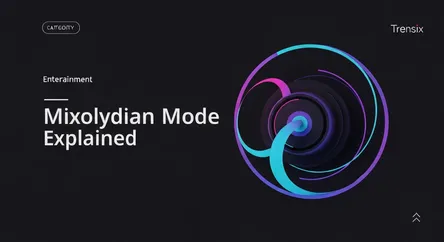Entertainment
Mixolydian Mode Explained

Discover the Mixolydian mode, the fifth mode of the major scale. Learn why its unique flat seventh note defines the sound of blues, rock, and jazz.
What is Mixolydian?
The Mixolydian mode is the fifth of the seven musical modes. Often called the 'dominant scale,' it is built on the fifth degree of a major scale and is defined by its flattened seventh note. This single altered note transforms a standard major scale into something with a distinct bluesy and rock-oriented character. For example, a G Mixolydian scale uses the same notes as a C major scale but starts on G, resulting in G-A-B-C-D-E-F. The F-natural is the flat seventh that gives the mode its signature sound.
Why is it Trending?
The Mixolydian mode is a perennial topic in online music education because it's a cornerstone of popular music. It's the sound behind countless classic rock riffs, blues solos, and funk grooves. Content creators on platforms like YouTube and TikTok frequently post tutorials on how to use it for improvisation, especially on guitar and piano. This constant stream of educational content keeps the term relevant and highly searched by aspiring musicians wanting to emulate their favorite artists.
How Does it Affect People?
For listeners, the Mixolydian mode creates a feeling that is both upbeat and soulful. It lacks the finality of a major scale, creating a subtle tension that makes it perfect for looping vamps and compelling solos. For musicians, understanding Mixolydian is a gateway to improvisation. It allows them to break away from basic major and minor scales, adding a layer of harmonic sophistication and emotional depth to their playing, unlocking the characteristic sounds of genres from blues to jazz fusion.